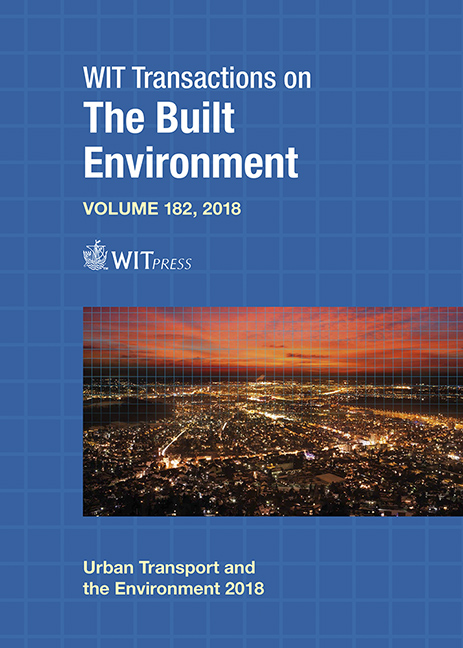SPATIAL DEVELOPMENT AND UTILIZATION OF PUBLIC SPACES IN SURROUNDING COMMUTER LINE STATIONS
Price
Free (open access)
Transaction
Volume
182
Pages
13
Page Range
253 - 265
Published
2019
Paper DOI
10.2495/UT180241
Copyright
WIT Press
Author(s)
EVAWANI ELLISA, RIZKY RAMADITYO
Abstract
The greater Jakarta metropolitan area with a population of over 30 million is supported by the four buffer cities of Bogor, Depok, Tangerang, and Bekasi, of which every day around 3.5 million of their residents commute to Jakarta (Jakarta Central Bureau of Statistic, 2016). The Commuter Line railway system, as one of the main transportation systems, connects the buffer cities and Jakarta. The National Commuter Line Company carries 960,000 persons/day and progressively attempts to increase the number of passengers by developing railway infrastructure including stations. The presence of the Commuter Line train system encourages sustainable mobility habits: people are able to access the station and catch the train instead of driving in their private vehicles, thereby reducing carbon emissions. This choice encourages an urban morphological transformation in areas surrounding the train stations. New functions, such as shops, restaurants, and parking areas emerge surrounding the train station, while the new sidewalks, bus stops, and other parts of the street furniture are poorly installed. Commuters begin to utilize the surrounding spots to support their various pedestrian activities, instead of using the station facilities, which are poorly maintained. Using the method of direct observation, this paper reveals the new arrangements of the urban elements around the various commuter stations and the behavioral tendencies of the commuters in utilizing them. The study found that the emergence of both new buildings and urban elements within the transit area supports the tendency of people to choose several new spots to do their activities. Unfortunately, these spots have emerged in an ad hoc manner and are poorly arranged without any sufficient planning. As a result, it has created chaos and messiness. The research findings concluded that the development of infrastructure around the Commuter Line Stations should be included with the rearrangement of accessible public spaces. Increasing convenience for the commuters is the critical strategy for attracting commuters away from their cars.
Keywords
behavior tendency, Commuter Line, pedestrian, sidewalk, urban form





